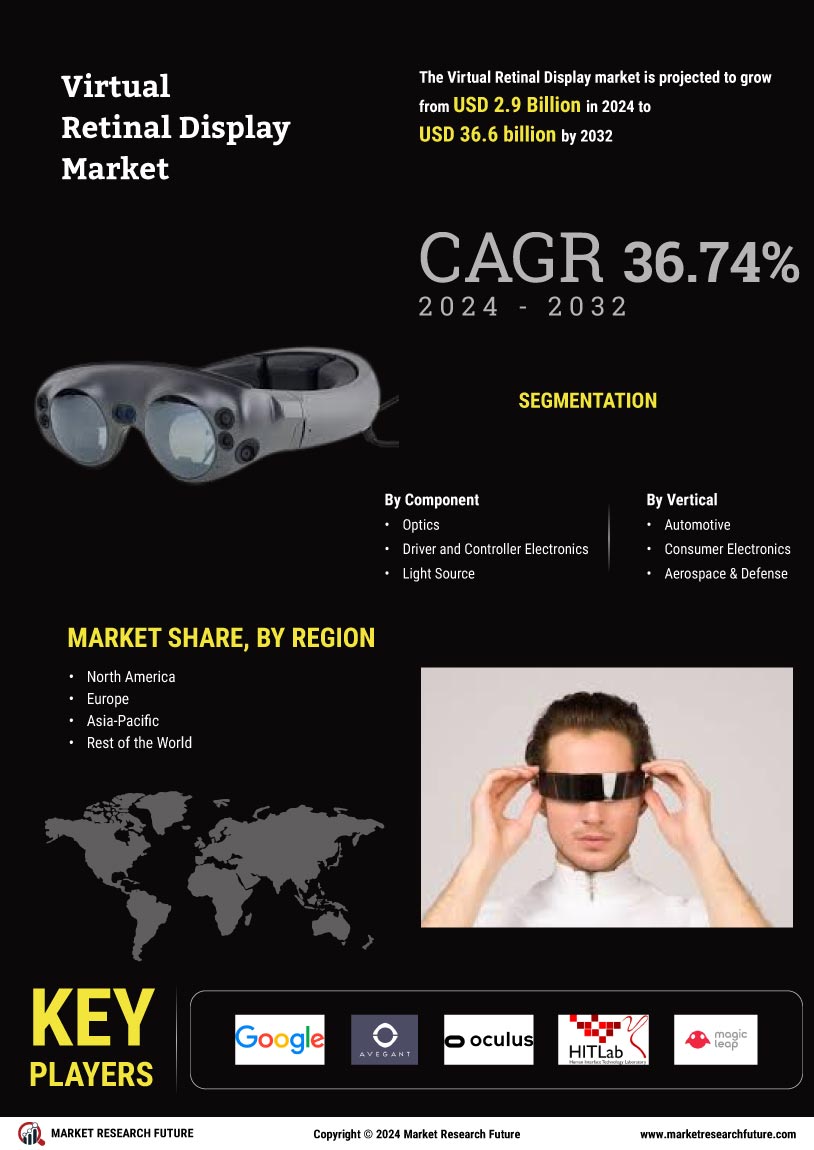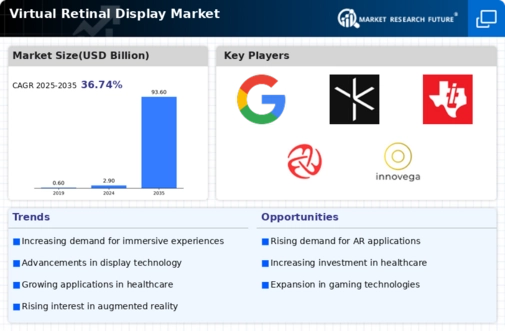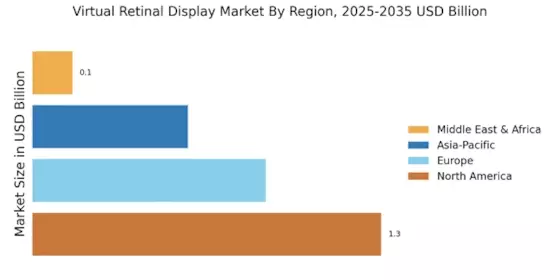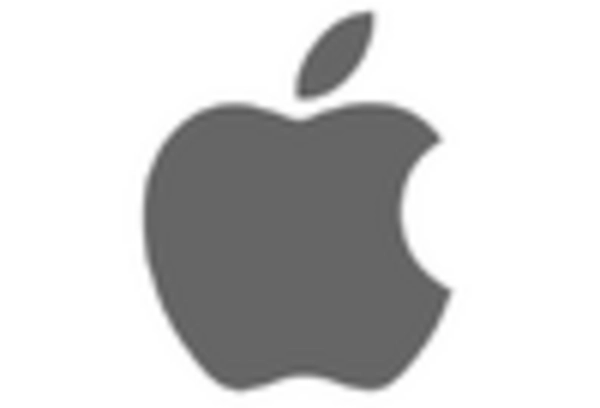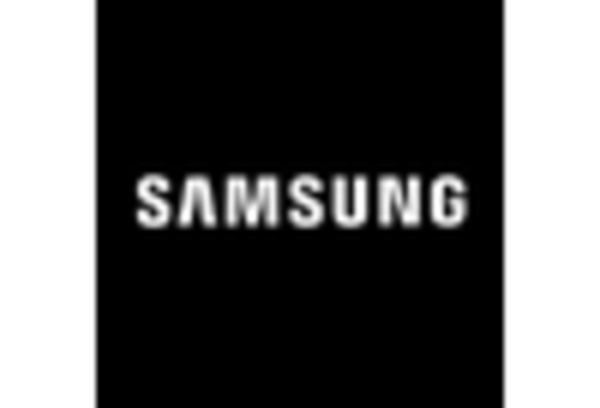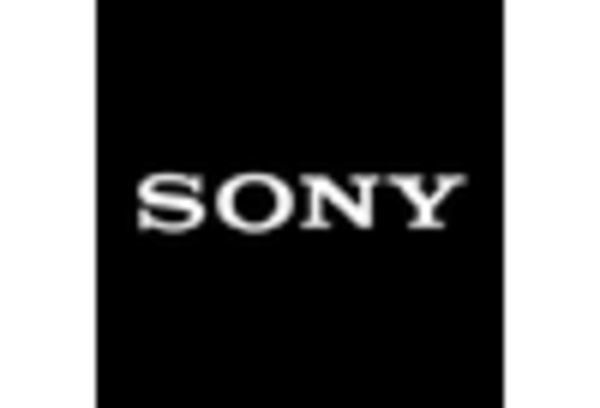Advancements in Display Technology
The Virtual Retinal Display Market is experiencing a surge due to rapid advancements in display technologies. Innovations such as microLED and OLED are enhancing image quality and reducing power consumption, making virtual retinal displays more appealing to consumers. As these technologies evolve, they enable higher resolutions and better color accuracy, which are critical for applications in gaming, education, and training. The market is projected to grow at a compound annual growth rate of approximately 25% over the next five years, driven by these technological improvements. Furthermore, the integration of artificial intelligence in display systems is likely to enhance user experience, making virtual retinal displays more intuitive and responsive. This trend indicates a promising future for the Virtual Retinal Display Market, as manufacturers strive to meet the increasing demand for high-performance visual solutions.
Growing Consumer Electronics Market
The Virtual Retinal Display Market is poised to benefit from the expanding consumer electronics market. As consumers increasingly seek advanced visual technologies for personal devices, the demand for virtual retinal displays is likely to rise. The proliferation of smart devices, including smartphones, tablets, and wearables, is creating new opportunities for integration of virtual retinal display technology. Market forecasts suggest that the consumer electronics segment could contribute significantly to the overall market growth, potentially accounting for 35% of the market share by 2028. This trend is further supported by consumer preferences for high-quality visual experiences, which virtual retinal displays can provide. Consequently, the Virtual Retinal Display Market is expected to thrive as it aligns with the broader trends in consumer electronics.
Healthcare Applications and Innovations
The Virtual Retinal Display Market is increasingly being recognized for its potential in healthcare applications. Innovations in medical imaging and surgical visualization are driving the adoption of virtual retinal displays in hospitals and clinics. These displays can provide surgeons with enhanced visualization of complex anatomical structures, improving precision during procedures. Market analysis indicates that the healthcare segment is expected to grow significantly, potentially reaching a market share of 30% by 2027. Furthermore, the use of virtual retinal displays in telemedicine is gaining traction, allowing healthcare professionals to conduct remote consultations with improved visual clarity. This trend underscores the transformative impact of virtual retinal displays in the medical field, suggesting a promising trajectory for the Virtual Retinal Display Market.
Rising Demand for Immersive Experiences
The Virtual Retinal Display Market is witnessing a notable increase in demand for immersive experiences across various sectors. Industries such as entertainment, education, and training are increasingly adopting virtual retinal displays to create engaging environments. For instance, in the gaming sector, the need for realistic graphics and interactive experiences is driving the adoption of these displays. Market data suggests that the entertainment segment alone could account for over 40% of the total market share by 2026. Additionally, educational institutions are exploring virtual retinal displays for enhanced learning experiences, allowing students to visualize complex concepts in 3D. This growing interest in immersive technologies indicates a robust potential for the Virtual Retinal Display Market, as it aligns with consumer preferences for more engaging and interactive content.
Increased Investment in Research and Development
The Virtual Retinal Display Market is benefiting from increased investment in research and development by key players. Companies are allocating substantial resources to innovate and enhance the capabilities of virtual retinal displays. This focus on R&D is likely to lead to breakthroughs in display resolution, user interface design, and integration with other technologies such as artificial intelligence and machine learning. As a result, the market is expected to see a proliferation of new products that cater to diverse consumer needs. Additionally, partnerships between technology firms and research institutions are fostering collaborative efforts to push the boundaries of what virtual retinal displays can achieve. This trend indicates a vibrant future for the Virtual Retinal Display Market, as continuous innovation remains a cornerstone of growth.
